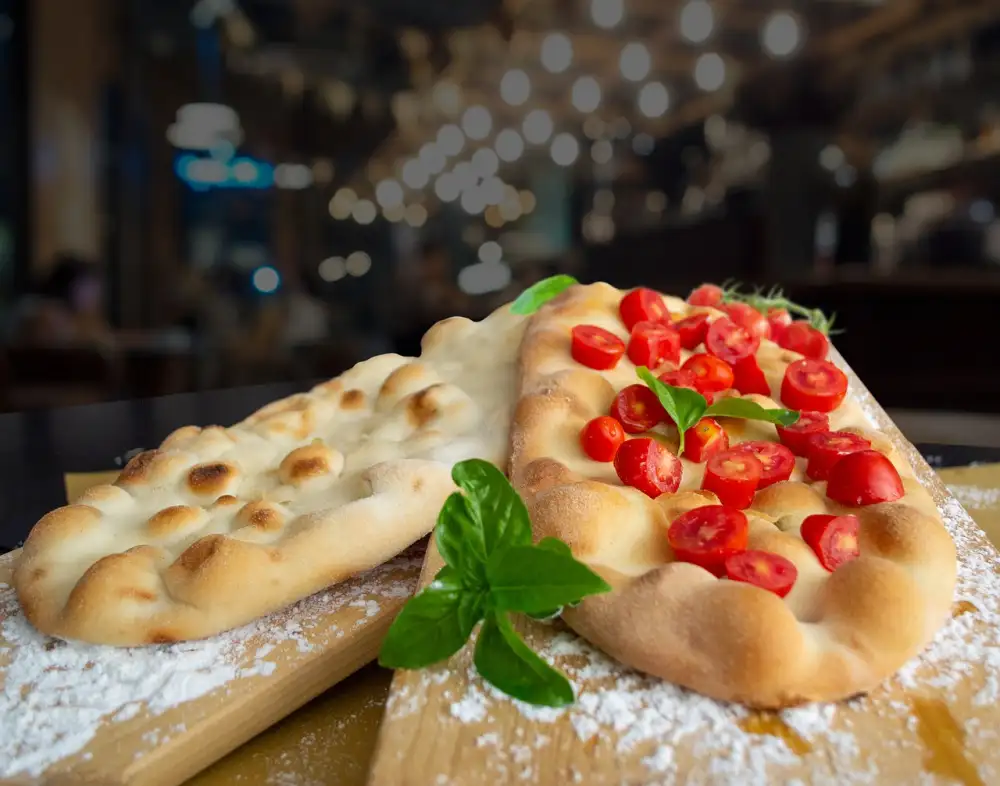Deliciously Crispy Gluten-Free Pizza: A Must-Try Recipe for Pizza Lovers

- Understanding Gluten and its Effects on Health
- Exploring the Benefits of Gluten-Free Pizza
- Essential Ingredients for Gluten-Free Pizza Dough
- Step-by-Step Guide to Making Gluten-Free Pizza Dough
- Tasty Toppings for Gluten-Free Pizza
- Baking and Serving Tips for the Perfect Gluten-Free Pizza
- Creative Variations of Gluten-Free Pizza Recipes
Pizza is a beloved dish enjoyed by people all over the world. However, for those with gluten sensitivities or celiac disease, indulging in this Italian classic can be a challenge. That's where gluten-free pizza comes in. With the rise in popularity of gluten-free diets, more and more pizzerias and home cooks are offering delicious alternatives that cater to everyone's dietary needs. In this article, we will explore the wonderful world of gluten-free pizza and share a must-try recipe that will satisfy even the most discerning pizza lovers. Get ready to embark on a culinary adventure where every bite is crispy, flavorful, and completely gluten-free!
Understanding Gluten and its Effects on Health
Gluten is a protein found in wheat, barley, and rye that gives dough its elasticity. While most people can tolerate gluten without any issues, there is a growing number of individuals who have gluten sensitivity or celiac disease.
For those with celiac disease, consuming gluten triggers an autoimmune response that damages the small intestine and leads to various health problems. Symptoms may include abdominal pain, bloating, diarrhea, fatigue, and even nutrient deficiencies.
Even if you don't have celiac disease, you may still experience discomfort or digestive issues when consuming gluten. This condition is known as non-celiac gluten sensitivity. It's important to understand the effects of gluten on your health so you can make informed choices about your diet.
By opting for a gluten-free pizza, you can enjoy a delicious meal without worrying about the negative effects of gluten on your body. It allows individuals with celiac disease or gluten sensitivity to indulge in their favorite comfort food without compromising their well-being.
In the next section, we will delve into the benefits of choosing a gluten-free pizza and how it can contribute to a healthier lifestyle.
Exploring the Benefits of Gluten-Free Pizza
Gluten-free pizza has gained popularity among food enthusiasts, not only for its delicious taste but also for its numerous health benefits. By eliminating gluten from the dough, individuals with gluten sensitivities or celiac disease can enjoy a satisfying pizza experience without any adverse effects on their health.
One of the main benefits of gluten-free pizza is improved digestion. Gluten, a protein found in wheat, barley, and rye, can be difficult to digest for some people. Consuming gluten-free pizza allows those with sensitivities to avoid discomfort such as bloating, gas, and stomach pain.
Additionally, a gluten-free diet has been linked to increased energy levels and improved focus. Many individuals report feeling less sluggish and more mentally alert after switching to a gluten-free lifestyle. This is particularly beneficial for those who suffer from brain fog or fatigue caused by consuming gluten.
Moreover, gluten-free pizza opens up new possibilities for those following a vegetarian or vegan diet. With the absence of traditional meat-based toppings like pepperoni or sausage, individuals can explore creative alternatives such as roasted vegetables, plant-based proteins, or even dairy-free cheese options.
Furthermore, embracing gluten-free pizza can be an excellent way to incorporate more nutrient-rich ingredients into your diet. By using alternative flours like almond flour or quinoa flour in the dough recipe, you can increase your intake of essential vitamins and minerals while still enjoying a tasty meal.
In conclusion, exploring the world of gluten-free pizza offers numerous benefits for both your health and culinary experiences. Whether you have specific dietary restrictions or simply want to try something new, this delicious alternative will satisfy your cravings while keeping you nourished and satisfied.
Essential Ingredients for Gluten-Free Pizza Dough
When it comes to making gluten-free pizza dough, the key is to find alternative ingredients that can mimic the texture and taste of traditional wheat-based dough. Here are some essential ingredients for a delicious gluten-free pizza crust:
1. Gluten-Free Flour Blend: Start with a good quality gluten-free flour blend as the base for your dough. Look for blends that contain a mixture of flours like rice flour, tapioca flour, and potato starch. These flours provide structure and help bind the dough together.
2. Xanthan Gum or Guar Gum: Since gluten is responsible for giving elasticity to dough, you'll need a substitute to achieve a similar texture. Xanthan gum or guar gum can be added to the dough to improve its elasticity and prevent it from becoming crumbly.
3. Yeast: Yeast is essential for achieving a light and airy crust. Make sure to use gluten-free yeast specifically labeled as such.
4. Olive Oil: Adding olive oil to the dough helps keep it moist and adds flavor.
5. Salt: Don't forget to add salt to enhance the overall taste of your pizza crust.
By using these essential ingredients, you can create a gluten-free pizza dough that is just as delicious and satisfying as its traditional counterpart.
Step-by-Step Guide to Making Gluten-Free Pizza Dough
1. Start by combining gluten-free flour blend, xanthan gum, yeast, and salt in a mixing bowl.
2. In a separate bowl, whisk together warm water and olive oil.
3. Slowly pour the wet ingredients into the dry ingredients while stirring continuously.
4. Mix until a soft dough forms. If the dough is too sticky, add more flour blend; if it's too dry, add more water.
5. Transfer the dough onto a floured surface and knead for about 5 minutes until it becomes smooth and elastic.
6. Shape the dough into a ball and place it back into the mixing bowl. Cover with a damp cloth and let it rise for about an hour or until doubled in size.
7. Preheat your oven to the highest temperature possible (usually around 500°F/260°C).
8. Once the dough has risen, divide it into smaller portions depending on how many pizzas you want to make.
9. Roll out each portion of dough on a floured surface to your desired thickness.
10. Transfer the rolled-out dough onto a baking sheet or pizza stone lined with parchment paper.
11. Now comes the fun part – adding your favorite toppings! Be creative and experiment with different flavors and combinations.
12. Once you've added all your toppings, carefully transfer the pizza into the preheated oven.
13. Bake for about 12-15 minutes or until the crust is golden brown and crispy.
14. Remove from the oven and let it cool for a few minutes before slicing and serving.
Making gluten-free pizza dough may require some practice, but once you get the hang of it, you'll be able to enjoy deliciously crispy gluten-free pizzas anytime!
Tasty Toppings for Gluten-Free Pizza
When it comes to gluten-free pizza, the possibilities are endless when it comes to toppings. Whether you prefer classic flavors or want to experiment with new combinations, there is a topping out there that will satisfy your taste buds.
For a traditional option, try a Margherita pizza with fresh tomato slices, mozzarella cheese, and basil leaves. The simplicity of this combination allows the flavors to shine through and pairs perfectly with the crispy gluten-free crust.
If you're feeling adventurous, consider adding some unique toppings like caramelized onions, roasted garlic, or sautéed mushrooms. These ingredients add depth and complexity to your pizza and take it to a whole new level of deliciousness.
For those who love spice, try adding some sliced jalapeños or crushed red pepper flakes for an extra kick. The heat from these toppings will complement the flavors of the crust and other ingredients, creating a truly memorable pizza experience.
Don't forget about the power of fresh herbs! Sprinkle some chopped parsley, oregano, or thyme on top of your pizza before baking for an aromatic burst of flavor. These herbs not only add freshness but also enhance the overall taste of your gluten-free creation.
Lastly, don't be afraid to get creative with your toppings. Experiment with different cheeses like feta or goat cheese for a tangy twist. Add some sliced olives or sun-dried tomatoes for a burst of umami flavor. The beauty of gluten-free pizza is that you can customize it to suit your preferences and create a truly unique culinary masterpiece.
So go ahead and let your imagination run wild when it comes to topping your gluten-free pizza. With so many options available, you'll never get bored and will always have a delicious meal waiting for you.
Baking and Serving Tips for the Perfect Gluten-Free Pizza
To ensure that your gluten-free pizza turns out perfectly crispy and delicious, here are some baking and serving tips to keep in mind:
1. Preheat your oven: It's essential to preheat your oven to a high temperature, around 475°F (245°C), before baking your pizza. This will help create a crispy crust.
2. Use a pizza stone or baking sheet: Place your gluten-free pizza dough on a preheated pizza stone or baking sheet lined with parchment paper. This will help distribute heat evenly and prevent sticking.
3. Par-bake the crust: Before adding toppings, par-bake the gluten-free pizza crust for about 5-7 minutes. This will help it become slightly crispier and hold up better when loaded with toppings.
4. Choose quality ingredients: Opt for fresh, high-quality ingredients when selecting toppings for your gluten-free pizza. Fresh vegetables, flavorful cheeses, and premium meats can elevate the taste of your pizza.
5. Don't overload with toppings: While it's tempting to pile on the toppings, be mindful not to overload your gluten-free pizza as this can make it soggy. Stick to a moderate amount of toppings to maintain a crispy texture.
6. Bake until golden brown: Keep an eye on your gluten-free pizza while it bakes and remove from the oven once the crust is golden brown and the cheese has melted and bubbled.
7. Let it cool before slicing: Allow your gluten-free pizza to cool for a few minutes before slicing into it. This will help the crust set properly and prevent any topping mishaps.
8. Serve immediately: Gluten-free pizzas are best enjoyed fresh out of the oven when they are still hot and crispy. Serve immediately to savor all the flavors.
By following these baking and serving tips, you can achieve a perfect gluten-free pizza that will satisfy even the most discerning pizza lovers.
Creative Variations of Gluten-Free Pizza Recipes
While the classic Margherita or pepperoni pizza is always a crowd-pleaser, there are endless possibilities when it comes to creating unique and delicious gluten-free pizza recipes. Here are a few creative variations to inspire your culinary adventures:
1. Mediterranean Delight: Top your gluten-free pizza crust with tangy hummus, roasted red peppers, kalamata olives, feta cheese, and a sprinkle of fresh oregano for a taste of the Mediterranean.
2. BBQ Chicken: Spread a layer of gluten-free barbecue sauce on your pizza dough and top it with grilled chicken, red onions, mozzarella cheese, and cilantro for a smoky and savory flavor combination.
3. Veggie Supreme: Load up your gluten-free crust with an array of colorful vegetables like bell peppers, mushrooms, zucchini, cherry tomatoes, and spinach. Add some goat cheese or vegan cheese for extra creaminess.
4. Hawaiian Twist: Give your gluten-free pizza a tropical twist by adding sliced ham or Canadian bacon along with juicy pineapple chunks. For an extra kick of flavor, drizzle some sriracha sauce on top.
5. Pesto Paradise: Instead of tomato sauce, spread a generous amount of homemade basil pesto on your gluten-free crust. Top it with fresh mozzarella cheese, cherry tomatoes, and pine nuts for a burst of vibrant flavors.
6. Breakfast Pizza: Who says pizza is only for lunch or dinner? Create a breakfast-inspired masterpiece by topping your gluten-free crust with scrambled eggs, crispy bacon or sausage crumbles, cheddar cheese, and diced bell peppers.
Remember to experiment with different herbs and spices to enhance the flavors in each variation. The beauty of making gluten-free pizza at home is that you have the freedom to customize it according to your preferences and dietary needs.
So go ahead and unleash your creativity in the kitchen! With these creative variations, you can enjoy the deliciousness of gluten-free pizza in a whole new way.
In conclusion, gluten-free pizza is not only a delicious alternative for those with gluten sensitivities or allergies, but it can also be enjoyed by anyone who appreciates a good slice of pizza. By understanding the effects of gluten on our health and exploring the benefits of gluten-free options, we can embrace the deliciousness of gluten-free pizza without sacrificing taste or texture. With the right ingredients and techniques, you can create a crispy and flavorful pizza that will satisfy your cravings. So why not give it a try and discover a whole new world of pizza possibilities?
Published: 09. 12. 2023
Category: Recipes



